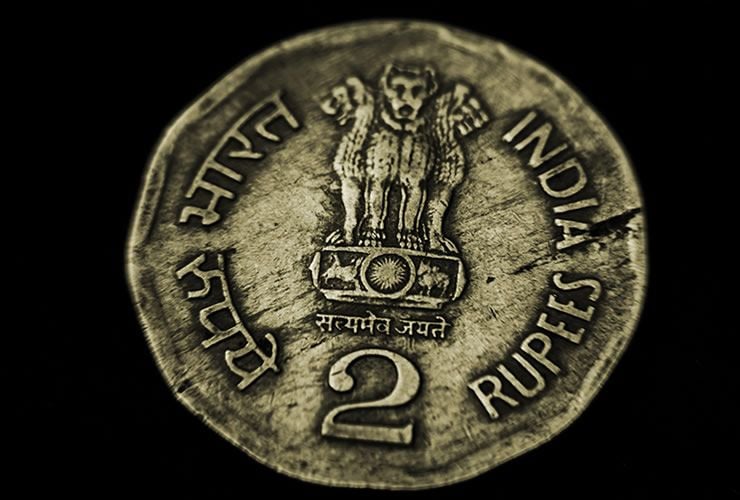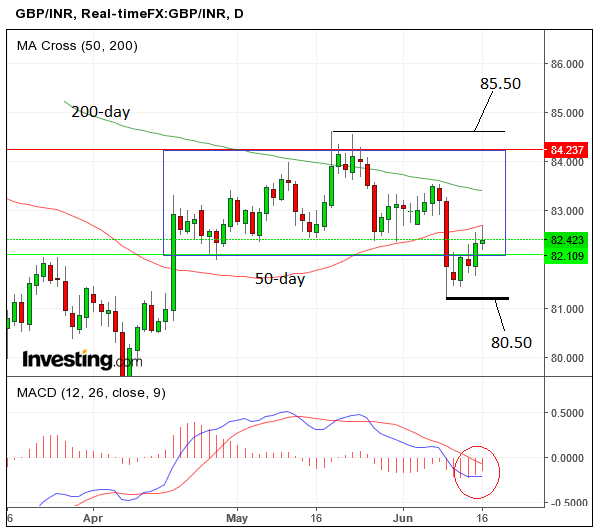Indian Ruppee & Pound to Remain Locked in Tight Range

The Indian Rupee remains the ‘star’ of the Asian currency firmament based on economic fundamentals but actual price action sees the currency trapped within a range – against Sterling at least.
The GBP/INR exchange rate pierced below the range lows after the UK general election when the uncertain result weighed on GBP.

The pair made no headway south, however, and recovered moving back inside the range after the Bank of England (BOE) almost voted to increase interest rates at its June meeting.
Higher interest rates are supportive of a currency as they increase capital inflows.
A rebreak of the 81.21 post-election lows, however, would confirm a downside breakout and signal a move down to a target at roughly 80.50.
Moves out from ranges usually reach as far as the height of the range extrapolated from the range lows down.
Likewise, a break above the range highs at 84.63 would signal a clear break higher, reinvigorating the uptrend and leading to move up to a target at 85.50.
The Indian Rupee continues to benefit from high carry-trade inflows.
Carry-trade is a type of investment which involves borrowing a currency in a low interest rate jurisdiction such as the Eurozone or Japan and using the money to buy a currency with a relatively high interest rate such as the New Zealand Dollar or the Indian Rupee.
The carry-trader the profits from the difference.
Rising foreign investment flows and demand for Indian stocks have also increased the demand for the Rupee.
“Riding on the back of heavy inflows from FPI (Foreign Portfolio Investment) and FDI (Foreign Direct Investment) the Indian rupee has appreciated by over 5% since the start of the year 2017,” said Pooja Jaijsar of ZeeBusiness.
Nordea Bank’s Anders Svendsen expands on the point:
“The INR is with no doubt the star performer in Asia this year. Alongside impressive economic growth and low inflation rates, we see high devotion to introduction of crucial reforms and relatively low dependency on the international trade, which make India attractive country for investments with a YTD net capital inflows of over USD 20bn.”
In light of the Federal Reserve’s decision to hike interest rates at their meeting on Wednesday, however, the Rupee would stand to lose if the Fed continued tightening monetary policy, particularly if it starts to sell the bonds it holds on its 4.5tr balance sheet, as has been suggested might happen.
“Reduction of balance sheet size would mean withdrawing liquidity which will have an impact on the flow of funds to the emerging markets including India. India has been a beneficiary of these flows in both the FDI and FPI spaces,” said Madan Sabnavis and Anuja Shah, economists at Care Ratings.
Another risk to the Rupee lies in the weakness of Indian Banks due to the high number of non-performing loans they have on their books.
“Banks’ stressed assets reached 12.3% of GDP last year. The raising trend is, nevertheless, attributed to higher recognition of the NPL loans, indicating an improvement in governance,” said Nordea’s Svendsen.

